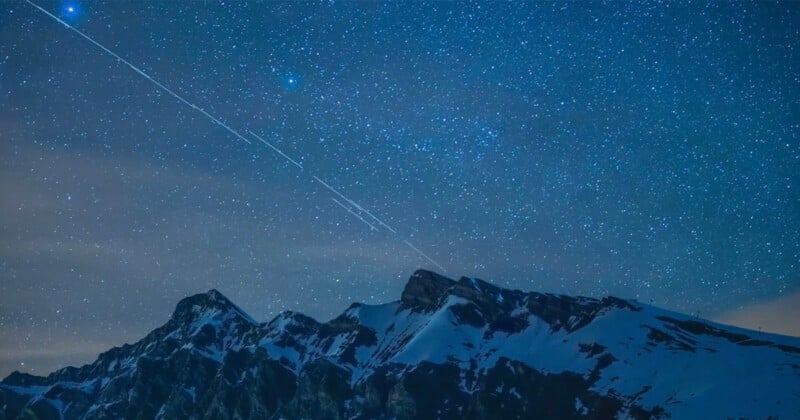Starlink Satellites Are Increasingly Blocking Our View of the Universe

A new study has found that the increasing number of Elon Musk-owned Starlink satellites in orbit is blocking scientists’ ability to view the Universe.
The latest generation of Starlink satellites — which are providing fasting internet around the world — are interfering far more with radio telescopes than their predecessors.
The report from the Netherlands Institute for Radio Astronomy (ASTRON) says thousands of orbiting satellites are “blinding” radio telescopes and may be a hindrance to astronomical research.
While Starlink is something of a godsend to people who live in remote or challenging areas of the world such as Ukraine and Yemen, astronomers are increasingly bristling at the knock-on effect it has for observing the wider Universe.
“Every time more of these are launched with these kinds of emission levels, we see less and less of the sky,” director of ASTRON, Professor Jessica Dempsey, tells BBC News.
“We’re trying to look at things like the jets, which are emitted from black holes in the centre of galaxies. We also look at some of the earliest galaxies, millions and millions of light years away, as well as exoplanets.”
ASTRON reckons that V2 Starlink satellites are 32 times stronger than the first generation. The amount of radiation the satellites emit exceeds regulations set by the industry body the International Telecommunications Union, Dempsey adds.
There are well over 6,000 Starlink satellites estimated to be in orbit — by far the largest provider of satellites circling the Earth 342 miles (550 kilometers) above. They are quite large too; they have 10-foot (three-meter) flat panels with a 26-foot solar array (eight-meter).
Last week, PetaPixel featured photographer Josh Dury who captured a bright pass of a Starlink “train” above his home in the U.K.
“This subject is of vast concern to the international astronomy community over the impact they will have to all types of astronomical observation as well as to the conservation of the night sky,” Dury said.
The scientists from ASTRON expect the issue to get worse with more companies hoping to launch their own satellites. The BBC says that by 2030 the number of satellites in orbit is expected to surpass 100,000.
It threatens humanity’s view of the Universe because electromagnetic waves that are being omitted from distant galaxies and planets which astronomers rely on to get a picture of celestial objects that can’t be seen with the human eye are being disturbed by satellites.
“Since SpaceX is launching about 40 second-generation Starlink satellites every week, this problem is becoming increasingly worse,” adds the lead author of the study Cees Bassa.
The BBC reached out to SpaceX, the company that owns Starlink, for comment but it did not respond.